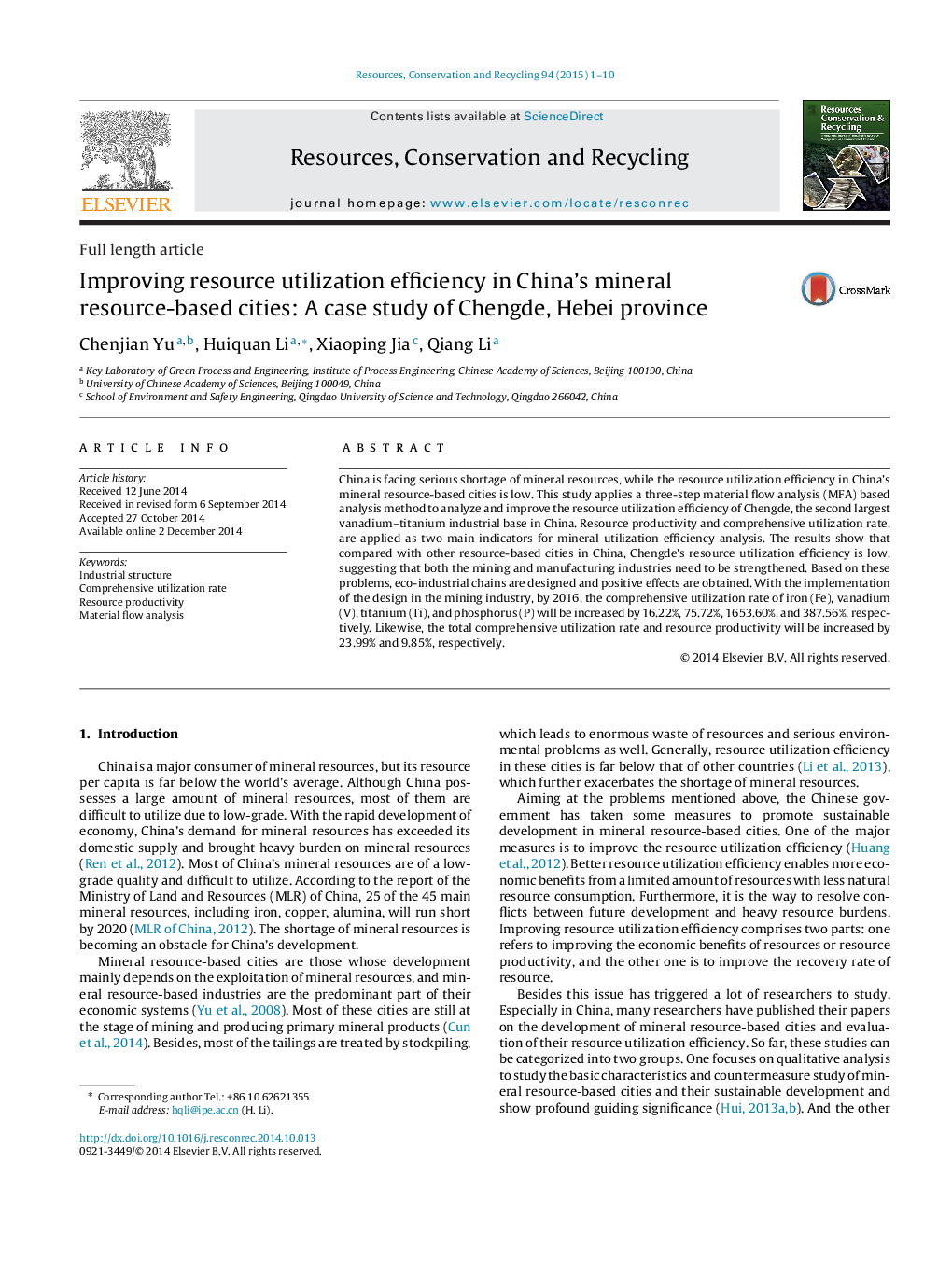| کد مقاله | کد نشریه | سال انتشار | مقاله انگلیسی | نسخه تمام متن |
|---|---|---|---|---|
| 1062999 | 1485695 | 2015 | 10 صفحه PDF | دانلود رایگان |
• A three-step MFA-based analysis method is applied to analyze resource utilization efficiency.
• Resource productivity and comprehensive utilization rate are two main indicators.
• For Chengde, both mining industry and manufacturing industry should be strengthened.
• Extended eco-industrial chains could improve resource utilization efficiency.
China is facing serious shortage of mineral resources, while the resource utilization efficiency in China's mineral resource-based cities is low. This study applies a three-step material flow analysis (MFA) based analysis method to analyze and improve the resource utilization efficiency of Chengde, the second largest vanadium–titanium industrial base in China. Resource productivity and comprehensive utilization rate, are applied as two main indicators for mineral utilization efficiency analysis. The results show that compared with other resource-based cities in China, Chengde's resource utilization efficiency is low, suggesting that both the mining and manufacturing industries need to be strengthened. Based on these problems, eco-industrial chains are designed and positive effects are obtained. With the implementation of the design in the mining industry, by 2016, the comprehensive utilization rate of iron (Fe), vanadium (V), titanium (Ti), and phosphorus (P) will be increased by 16.22%, 75.72%, 1653.60%, and 387.56%, respectively. Likewise, the total comprehensive utilization rate and resource productivity will be increased by 23.99% and 9.85%, respectively.
Figure optionsDownload as PowerPoint slide
Journal: Resources, Conservation and Recycling - Volume 94, January 2015, Pages 1–10
